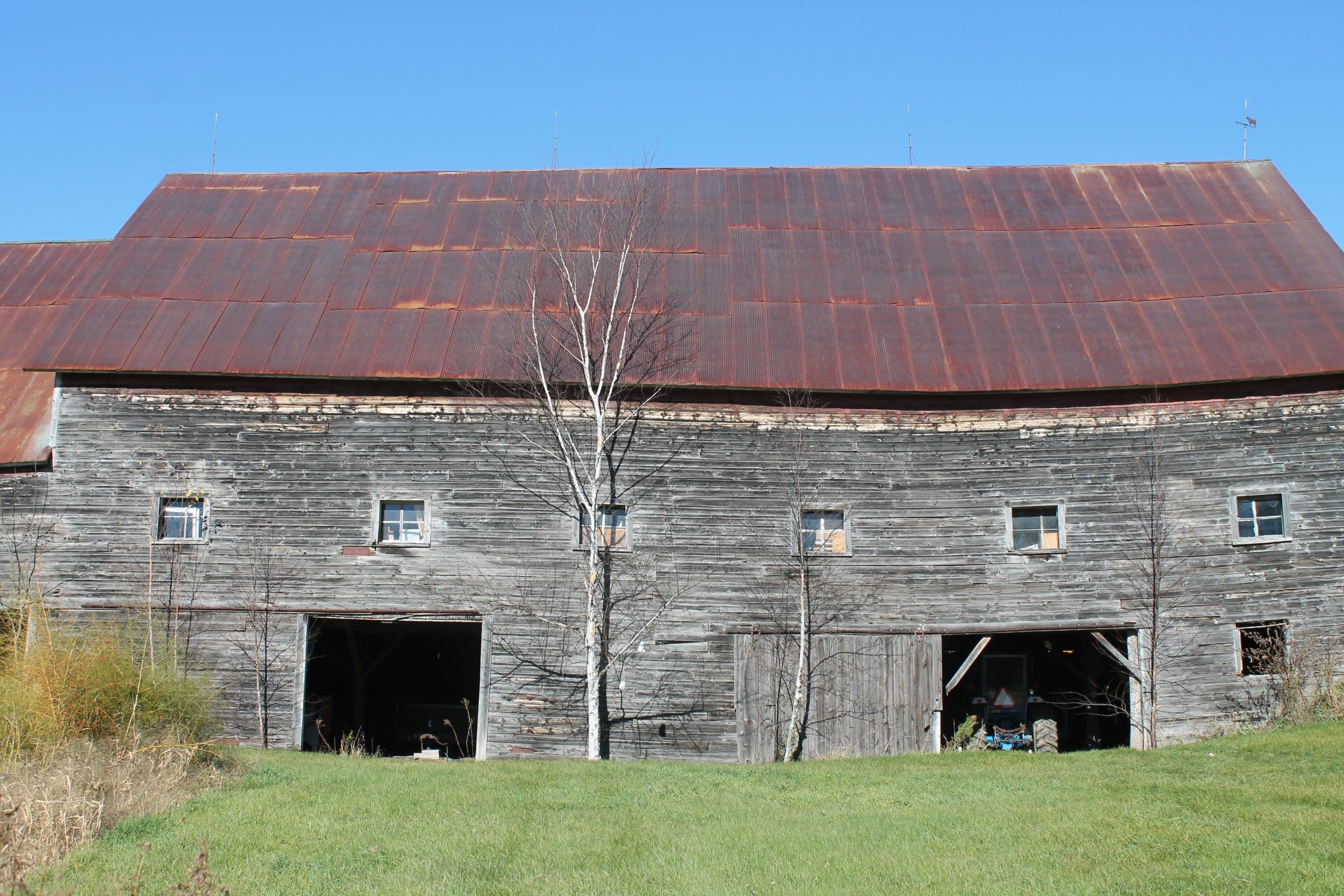Magazine
Barnology | Research and Reverence for New England Barns
Here in Vermont, there are still more barns from the last two to three centuries than there are box stores from this one. Armed with Thomas Durant Visser’s Field Guide to New England Barns and Farm Buildings, and The Vermont Barn Census brochure of “Historic Barn Types,” my recent Sunday drive to gaze at these inspiring […]

A barn from the 1800s
Photo Credit : Julia ShipleyHere in Vermont, there are still more barns from the last two to three centuries than there are box stores from this one.
Armed with Thomas Durant Visser’s Field Guide to New England Barns and Farm Buildings, and The Vermont Barn Census brochure of “Historic Barn Types,” my recent Sunday drive to gaze at these inspiring structures could have easily become an educational, preservation -based mission. But no, I pitched the literature in the backseat and simply gawked at the grey boards and the tin roofs of these secular cathedrals.
Since late August, many of us who raise animals and vegetables have been consumed with progressively stashing everything that’s been outside, inside. Taking a break from the necessary labors, Howie, my barn- building boyfriend and I packed a picnic and meandered around the neighborhood, just to take an appreciative look at some of these stationary schooners, many of which still carry families through the white straights of winter with their cargoes of dry hay, bins of grain, and warm animals. Other structures, though still erect, harbor only memories of horses’ hooves, straw chaff, and spilled milk.
We munched our sandwiches next to an English-style barn, also called a “30-by 40″ because they’re often built thirty feet wide by forty feet long. This was the gauntest barn on our trip. I studied the foundation rocks, and wondered who gathered them, and on what day were they placed next to each other? In Visser’s book, he talks about an early American construction technique dating back to Medieval times called the “scribe rule”—a means of making unique specific pairs of mortice and tenon, and then inscribing them with “marriage marks,” a Roman numeral-like way of denoting the coupled timbers —a kind of message from the builders to the people of the future as to how these pieces have come together thus.
In my twenties I spent a winter working at Merck Forest and Farmland Center in Rupert, Vt. I remember climbing the barn ladder into the loft where square- baled hay was packed up to the rafters. Morning after frigid morning, I’d struggle up and clench the twine straps to yank down ten bales for the horses, cattle and sheep. Slowly, as days went by and the bales dwindled, the barn’s wooden walls re-emerged. Then on Valentine’s Day– it almost seemed like the barn maker’s design– my morning crawl to withdraw hay suddenly revealed the sunlight streaming through a heart shaped vent at the roof’s peak.
[slideshow post_id=”534336”]
So who stacked the foundation stones of my neighbor’s withering barn? We found no marriage marks or heart- shaped messages here. Just the stones persisting in their simple service, keeping the wood above the soil, always. Then Howie pulled out another book I’d tossed into the backseat, American Barns and Covered Bridges by Eric Sloane, and read Sloane’s words with slight smile, “The great names of the American past have been well recorded but the country barn builder is anonymous.”
Julia Shipley
Contributing editor Julia Shipley’s stories celebrate New Englanders’ enduring connection to place. Her long-form lyric essay, “Adam’s Mark,” was selected as one of the Boston Globes Best New England Books of 2014.
More by Julia Shipley

